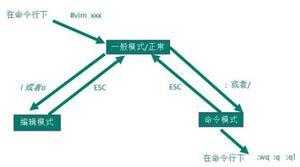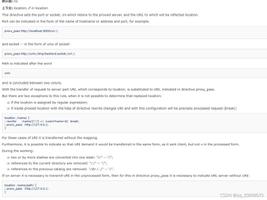python模块之xml.etree.ElementTree

<?xml version="1.0"?><data>
<country name="Liechtenstein">
<rank>1</rank>
<year>2008</year>
<gdppc>141100</gdppc>
<neighbor name="Austria" direction="E"/>
<neighbor name="Switzerland" direction="W"/>
</country>
<country name="Singapore">
<rank>4</rank>
<year>2011</year>
<gdppc>59900</gdppc>
<neighbor name="Malaysia" direction="N"/>
</country>
<country name="Panama">
<rank>68</rank>
<year>2011</year>
<gdppc>13600</gdppc>
<neighbor name="Costa Rica" direction="W"/>
<neighbor name="Colombia" direction="E"/>
</country>
</data>
解析XML文件
parse()函数,从xml文件返回ElementTree
python;gutter:true;">from xml.etree.ElementTree import parsetree = parse('demo.xml') //获取ElementTree
root = tree.getroot() // 获取根元素
Element.tag 、Element.attrib、Element.text
In [6]: root.tagOut[6]: 'data'
In [7]: root.attrib
Out[7]: {}
In [25]: root.text
Out[25]: '\n '
for child in root 迭代获得子元素
In [8]: for child in root:...: print(child.tag, child.attrib)
...:
country {'name': 'Liechtenstein'}
country {'name': 'Singapore'}
country {'name': 'Panama'}
Element.get() 获得属性值
In [27]: for child in root:...: print (child.tag, child.get('name'))
...:
country Liechtenstein
country Singapore
country Panama
root.getchildren() 获得直接子元素
In [21]: root.getchildren()Out[21]:
[<Element 'country' at 0x7f673581c728>,
<Element 'country' at 0x7f673581ca98>,
<Element 'country' at 0x7f673581cc28>]
root[0][1] 根据索引查找子元素
In [9]: root[0][1].textOut[9]: '2008'
In [10]: root[1][0].text
Out[10]: '4'
root.find() 根据tag查找直接子元素,返回查到的第一个元素
In [13]: root.find('country').attribOut[13]: {'name': 'Liechtenstein'}
root.findall() 根据tag查找直接子元素,返回查到的所有元素的列表
In [16]: for country in root.findall('country'): ...: print (country.attrib)
...:
{'name': 'Liechtenstein'}
{'name': 'Singapore'}
{'name': 'Panama'}
root.iterfind() 根据tag查找直接子元素,返回查到的所有元素的生成器
In [22]: root.iterfind('country')Out[22]: <generator object prepare_child.<locals>.select at 0x7f6736dccfc0>
支持的XPath语句(XML Path)
In [19]: root.findall('.//rank') //查找任意层次元素Out[19]:
[<Element 'rank' at 0x7f673581c8b8>,
<Element 'rank' at 0x7f673581c6d8>,
<Element 'rank' at 0x7f673581cc78>]
In [32]: root.findall('country/*') //查找孙子节点元素
Out[32]:
[<Element 'rank' at 0x7f673581c8b8>,
<Element 'year' at 0x7f673581cbd8>,
<Element 'gdppc' at 0x7f673581c958>,
<Element 'neighbor' at 0x7f673581c688>,
<Element 'neighbor' at 0x7f673581cb38>,
<Element 'rank' at 0x7f673581c6d8>,
<Element 'year' at 0x7f673581c5e8>,
<Element 'gdppc' at 0x7f673581c868>,
<Element 'neighbor' at 0x7f673581cb88>,
<Element 'rank' at 0x7f673581cc78>,
<Element 'year' at 0x7f673581ccc8>,
<Element 'gdppc' at 0x7f673581cd18>,
<Element 'neighbor' at 0x7f673581cd68>,
<Element 'neighbor' at 0x7f673581cdb8>]
In [33]: root.findall('.//rank/..') // ..表示父元素
Out[33]:
[<Element 'country' at 0x7f673581c728>,
<Element 'country' at 0x7f673581ca98>,
<Element 'country' at 0x7f673581cc28>]
In [34]: root.findall('country[@name]') // 包含name属性的country
Out[34]:
[<Element 'country' at 0x7f673581c728>,
<Element 'country' at 0x7f673581ca98>,
<Element 'country' at 0x7f673581cc28>]
In [35]: root.findall('country[@name="Singapore"]') // name属性为Singapore的country
Out[35]: [<Element 'country' at 0x7f673581ca98>]
In [36]: root.findall('country[rank]') // 孩子元素中包含rank的country
Out[36]:
[<Element 'country' at 0x7f673581c728>,
<Element 'country' at 0x7f673581ca98>,
<Element 'country' at 0x7f673581cc28>]
In [37]: root.findall('country[rank="68"]') // 孩子元素中包含rank且rank元素的text为68的country
Out[37]: [<Element 'country' at 0x7f673581cc28>]
In [38]: root.findall('country[1]') // 第一个country
Out[38]: [<Element 'country' at 0x7f673581c728>]
In [39]: root.findall('country[last()]') // 最后一个country
Out[39]: [<Element 'country' at 0x7f673581cc28>]
In [40]: root.findall('country[last()-1]') // 倒数第二个country
Out[40]: [<Element 'country' at 0x7f673581ca98>]
root.iter() 递归查询指定的或所有子元素
In [29]: root.iter()Out[29]: <_elementtree._element_iterator at 0x7f67355dd728>
In [30]: list(root.iter())
Out[30]:
[<Element 'data' at 0x7f673581c778>,
<Element 'country' at 0x7f673581c728>,
<Element 'rank' at 0x7f673581c8b8>,
<Element 'year' at 0x7f673581cbd8>,
<Element 'gdppc' at 0x7f673581c958>,
<Element 'neighbor' at 0x7f673581c688>,
<Element 'neighbor' at 0x7f673581cb38>,
<Element 'country' at 0x7f673581ca98>,
<Element 'rank' at 0x7f673581c6d8>,
<Element 'year' at 0x7f673581c5e8>,
<Element 'gdppc' at 0x7f673581c868>,
<Element 'neighbor' at 0x7f673581cb88>,
<Element 'country' at 0x7f673581cc28>,
<Element 'rank' at 0x7f673581cc78>,
<Element 'year' at 0x7f673581ccc8>,
<Element 'gdppc' at 0x7f673581cd18>,
<Element 'neighbor' at 0x7f673581cd68>,
<Element 'neighbor' at 0x7f673581cdb8>]
In [31]: list(root.iter('rank'))
Out[31]:
[<Element 'rank' at 0x7f673581c8b8>,
<Element 'rank' at 0x7f673581c6d8>,
<Element 'rank' at 0x7f673581cc78>]
以上是 python模块之xml.etree.ElementTree 的全部内容, 来源链接: utcz.com/z/388939.html








